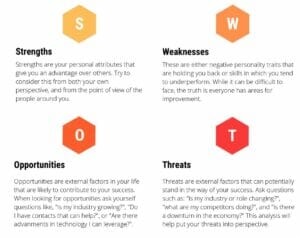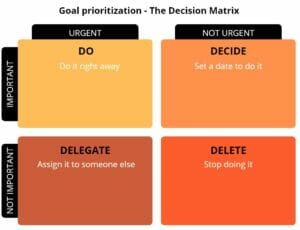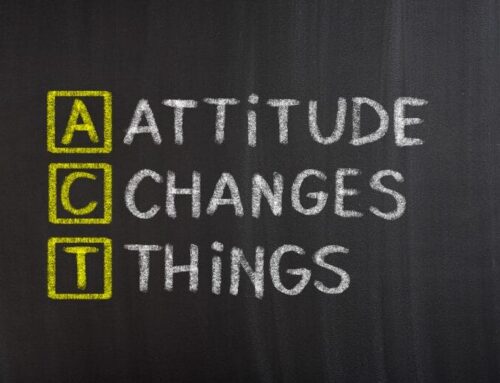When I’m coaching and mentoring my clients — whether as part of a larger corporate effort or individual engagements, there are a few questions that come up time and again. I thought it would be useful to go over the three most common scenarios and share my tried and trusted strategies.
#1
I really want to make a big change, how do I know if it’s the right move?
When I hear that someone is looking to make big changes, I’m always excited for them because one of the hardest parts of making a change is deciding or recognizing that you are in fact ready for change. I wrote recently about the importance of making measured moves in this current climate of rapid change, and my experience has shown me that sustainable change takes planning.
So, when a client expresses their need for a big change, I start by asking them to assess their change-readiness and to get clarity on the decisions they need to make.
I encourage the use of a SWOT analysis. Setting yourself up for success starts with a personal assessment to understand your strengths and weaknesses, where your opportunities lie and what might threaten your success.

Armed with this insight, we can make a strategic plan for change that is also realistic and achievable!
#2
I don’t have enough time or energy to get everything done that needs to be done. Help!
This scenario has become increasingly common with the collision of our professional and personal lives since the onset of the pandemic. The divisions between work and home have blurred, plus we are carrying additional responsibilities such as caregiving and home schooling as well as navigating remote teams and zoom fatigue. It’s a lot!
The key to pushing through this feeling of overwhelm is to have clear priorities to orient your actions around. But how do you prioritize when everything feels like a priority?
I approach this from a couple of perspectives. One is values-driven priorities — what matters most? Values sit at the core of our decision making. What matters most to us will determine what we prioritize and are motivated to achieve. There will often be overlaps in our personal and professional priorities when we are values-driven. For example, is one of your values helping others? Then you will prioritize being there for your family, and also being a mentor for your team.
Throughout our lives, we have continual conversations with ourselves about what our passions, purpose, and priorities are. When we ask, “What can I do?” we may get slightly different answers each time. That’s because situations change depending on the season.
To get clear on your priorities right now, try this quick exercise. Fill in the blanks:
- I’ve decided to _____ because _____ will happen. The best time to do this is _________.
- I’ve decided to _____ because _____ will happen. The best time to do this is _________.
- I’ve decided to _____ because _____ will happen. The best time to do this is _________.
One of my other tried and trusted strategies for prioritization is the decision matrix. The reality is no one can do everything, all of the time. The matrix helps you to understand what is urgent and important, what only you can do and what you can delegate. And just as importantly, what you can stop doing. You can apply long and short term lenses to the Decision Matrix to help you map your priorities whether it’s from this week or this year. Give it a go!

#3
I’m constantly coming up with resistance to change in the organization — how can I start building buy-in?
Resistance to change is a real problem that exists in every organization. I’ve written before about how it is important to recognize that change is not a ‘one-size-fits-all’ experience – and that it happens at an individual, team and organizational level. One of my early career experiences was around leading change in a huge energy company. I gained a great deal of understanding and empathy through this period of transformation for people who feel defensive and afraid when it feels like change is being forced upon them. For me, buy-in starts with creating a vision for what success will look like and giving people the opportunity to have a say. Whether it’s focus groups, town halls, surveys and polls — utilize feedback structures to ensure your people feel like they have a voice.
When people understand why the change is necessary, what the benefits of the change are, and importantly, what the consequences of doing nothing might be, they are much more likely to get on board.
It’s crucial in times of change that you lead by example; display the behaviors you want to see. Be clear, consistent and transparent in your communication. Make change something people can get excited about!
So, there we have it: three of the most common questions I get. What would you ask me?






